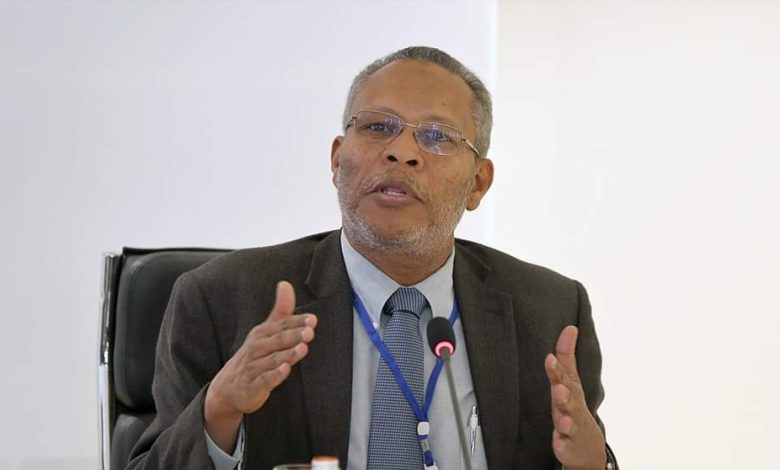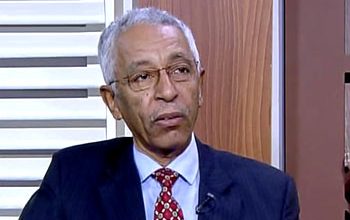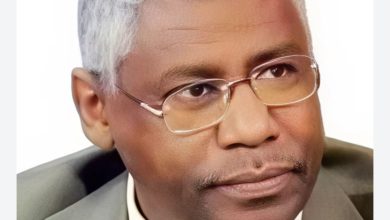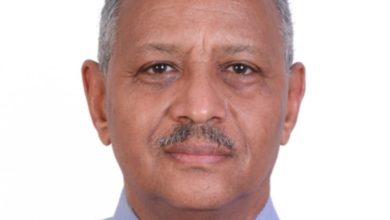An Unstable Transitional Period: The Transformations of the Hybrid Coalition in Sudan (5-6)

By: Hassan Elhag Ali Ahmad
Fourth: Competition for new hybrids
After Hamdouk’s resignation and General Al-Burhan’s announcement, on July 5, 2022, and the military institution withdrawal from the dialogue managed by the tripartite mechanism, competing for hybridization with the military component or armed movements to form new alliances emerged. The withdrawal decision did not stop the civilian parties’ efforts to ally themselves with one of the military components or armed movements. This pursuit was manifested in attempts to build a new hybridity as follows:
1. A hybrid with an alternative civil component:
The quest for new hybridity began with dissidents from FFC who formed an alliance called “Freedom and Change – The National Consensus,” and announced a new document called “The National Consensus Charter for the Unity of the Forces of Freedom and Change (FFC).” This group demanded unification and a return to the founding platform of FFC. The main goal of the new coalition is to replace the civil component represented by the FFC Alliance – the Central Council. Parties and organizations that were not part of the Central Council group joined the competing coalition. Members of the rival coalition justified their alliance by citing political neglect of their group. The reference to the zero-sum interaction practiced by the FFC Alliance – Central Council against the political forces, which became part of the National Charter Group, was evident in Minawi’s speech at the signing ceremony of the updated matrix of the Juba Peace Agreement on February 7, 2023, where he said: “The political forces that seized power devoted their time to antagonizing and belittling others, which made others resist. This conflict pushed each party to entrench itself to confront the other and opened a wide door that began and allowed the military component to intervene on October 25, 2021″.
The National Charter Alliance used the method of grouping by addressing general issues that facilitate membership gathering, with the aim of expanding their alliance by including new membership. The combination method succeeded in expanding the alliance. On November 3, 2023, it was announced that the National Pact Alliance would be expanded and take a new name: “Forces for Freedom and Change – Democratic Bloc,” or what this study calls “the competing civil alliance to the Central Council for Freedom and Change (FFC).” After its expansion, the coalition announced a “project to amend the constitutional document for the transitional period (amendment) for the year 2022.”
2. Implicit hybrid alliances
In the midst of seeking different new hybrids – which indicates the centrality of the military and armed component in political action in the transitional period – political forces resorted to hidden hybridity with one of the two sides of the military institution or armed movements. Three types of these alliances have emerged.
The first coalition was known as “Radical Change and Unity of Revolutionary Forces,” and it is the most politically and ideologically homogeneous coalition, and includes more than 10 professional and factional bodies. It was announced on July 24, 2022, and consists of the Sudanese Communist Party and the organizations it controls. This coalition used political and ideological discourse directed at specific political groups demanding the establishment of an alternative state model, based on secularism and the transition to a civil state, and working to move the country from a religious state to a democratic state and standing at the same distance from beliefs and religions. The alliance reflects an implicit hybridity; Because the Communist Party, the main driver of this alliance, signed a political agreement with two armed factions: the Sudan People’s Liberation Movement North(SPLM/N), Abdul Aziz Al-Hilu’s wing, and the Sudan Liberation Movement (SLM), Abdul Wahid Nour’s wing, and the three parties agreed to form a tripartite leadership to coordinate work between them. The alliance rejects hybridity with the military establishment, and because it is ideologically homogeneous, it is the most stable.
The second type of implicit hybrid emerged in a gathering called “Call of the People of Sudan.” It is an immediate alliance. Although most of the interim coalitions of the transitional period did not last long, the immediacy described in this section was characterized by a greater degree of instability. Immediateness does not mean the disappearance of the alliance, but rather indicates weak effectiveness after a limited period of activity. The group sought to confront the FFC Alliance when political forces, some of which were parties marginalized in the tripartite mechanism movement, and another group supportive of the military institution, part of which was involved in the previous regime, Islamists, native administrations, and Sufi leaders, took the initiative to form a new alliance called the “Call of the People of Sudan.” It appears from its components that it was a reaction to its exclusion from the hybrid alliance. The coalition aimed to expand the base of participation in political power and reject political exclusion. It focused on a way to address multiple actors at the same time to attract new membership. The most important recommendations of the Call of the People of Sudan was for National Accord focused on achieving national interests and renewing partnership, by forming a government of non-partisan competencies, combating hate speech, and strengthening the body of state institutions, including military and security institutions. The initiative formed a hidden hybrid with the armed forces, which was welcomed by Al-Burhan. He said: “We accepted the initiative of the well-known cleric, Caliph Sheikh Al-Tayeb, Sheikh “Al-Jed (Grandfather) Wad Badr”, to get out of the current crisis because he is one of the most trusted and respected figures.” Despite the momentum caused by the initiative, especially during and after its conference in mid -August 2022, it was unable to maintain this momentum due to the withdrawal of some political forces from it and was opposed by Rapid Support Forces (RSF).
Then a third form of implicit hybrid alliances emerged, when an expanded alliance was formed, including civil parties and armed movements, and this alliance gathered a visible and implicit hybrid, as it found implicit support from the armed forces; Leaders of armed movements continued in their higher government positions after forming the new alliance. The Egyptian government supported the new alliance. It did not accept the marginalization that it found from the regional and international powers that formed the “Quartet” group, to deal with the situation in Sudan, which is the most closely related to Sudan and has more interests than the interests of those countries that formed the “Quartet”. The Egyptian government moved, and arranged a meeting called by various political forces, in February 2023, in which FFC – the Central Council refrained from participating in it, while various political forces participated. The organizers of the meeting used a means of addressing many actors to focus on general issues, and parties were part of the hybrid alliance competing with the Central Council for FFC and another group of the immediate alliance. They issued a “political consensus document” and “the ruling national document for the transitional period”, and announced the formation of “coordination of the national democratic forces.” The discourse of the new coalition has touched on marginalization and political exclusion during the transitional period, that is, the method of zero interaction. The coalition statement considers that a single faction, or one bloc, from the Sudanese political body must not lead the transitional period unilaterally.
3. The new hybrid: the combination of the zero hypothesis and union that prohibits competition:
The zero vision is that the gains of one of the parties cannot be obtained, except at the expense of the losses of another party. The Union, which prevents competition, places restrictions on it, and divides the gains of political power among the members of the Union. As Adam Barzorski says in this situation, “Democracy turns into a monopoly of oligopoly, where political parties’ leaders prevent those outside the coalition from being part of the ruling composition.” This alliance, which brought the zero vision and a union, began to prevent competition with the workshop prepared by the Standard Committee of the Bar Association entitled “Dialogue on the Constitutional Framework” that was held from August 8-10 2022, to discuss a new transitional draft constitution. The workshop arranged a new alignment of political and military forces in preparation for the formation of new alliances. The new political alignment has emerged by adding three parties to join FFC-the Central Council in the new coalition includes, along with this civil group, armed movements and RSF.
The Zero Alliance sought to provide a new framing of the zero hybridity , highlighted by an opponent of democratic transformation and is eager to return the military to their barracks. This was shown in a different political discourse on the discourse of previous FFC that justifies and marketed these transformations. In cases of acute contentious politics, the transition from an alliance to its opposite is accompanied by a similar shift in the content and trends of political discourse as well. Here we cite two example of these two transformation that accompanied the zero hypothesis and the first cartel alliance to shift in the position towards RSF, which has become an important party in this new hybrid. The previous framing of RSF was reflected as a rogue militia consisting of criminals and mercenaries that had no consideration of the law. The statement of Yasser Arman, a leader in the FFC Central Council group, who launched a violent attack on RSF in 2014, and demanded that the army move against it and said the following: (Al –Bashir, his defense minister Abdul Rahim and Director of his intelligence Mohammad Atta recruited and trained more that (29) of the Janjaweed, and he explained that among this militia is (4) thousand and (600) of the Chadian opposition, and more than two thousand Mali, and the rest is a Hamidti’s militia. He confirmed that this militia which is called RSF are hired soldiers , mercenaries and war criminals who have no relation with the society and its values. Al-Bashir, Abdul Rahima and Mohamed Atta faced them and called for the Army to intervene before it is too late. New framing of the nature of RSF has emerged that enables it to be an active part of the new alliance, by transforming Arman’s speech on RSF to the opposite of what he was saying in 2014. In a symposium in September 2022, he said: “We want to support the military institution and that the National Army is going through very well -known complications, and we also consider RSF a force to build the national army in specific ways and specific security arrangements, and we are against sedition of the ousted regime and in order to survive, it wants to create a trouble between the RSF and the Army.
As for the second transformation in identity and political discourse, Hamidti represents it; After the RSF was the militia, which the previous regime used to oppress the armed movements and their supporters in Darfur, and Hamidti in the first period of the transitional period attacking leaders of FFC, turned into attacking supporters of the former regime.



